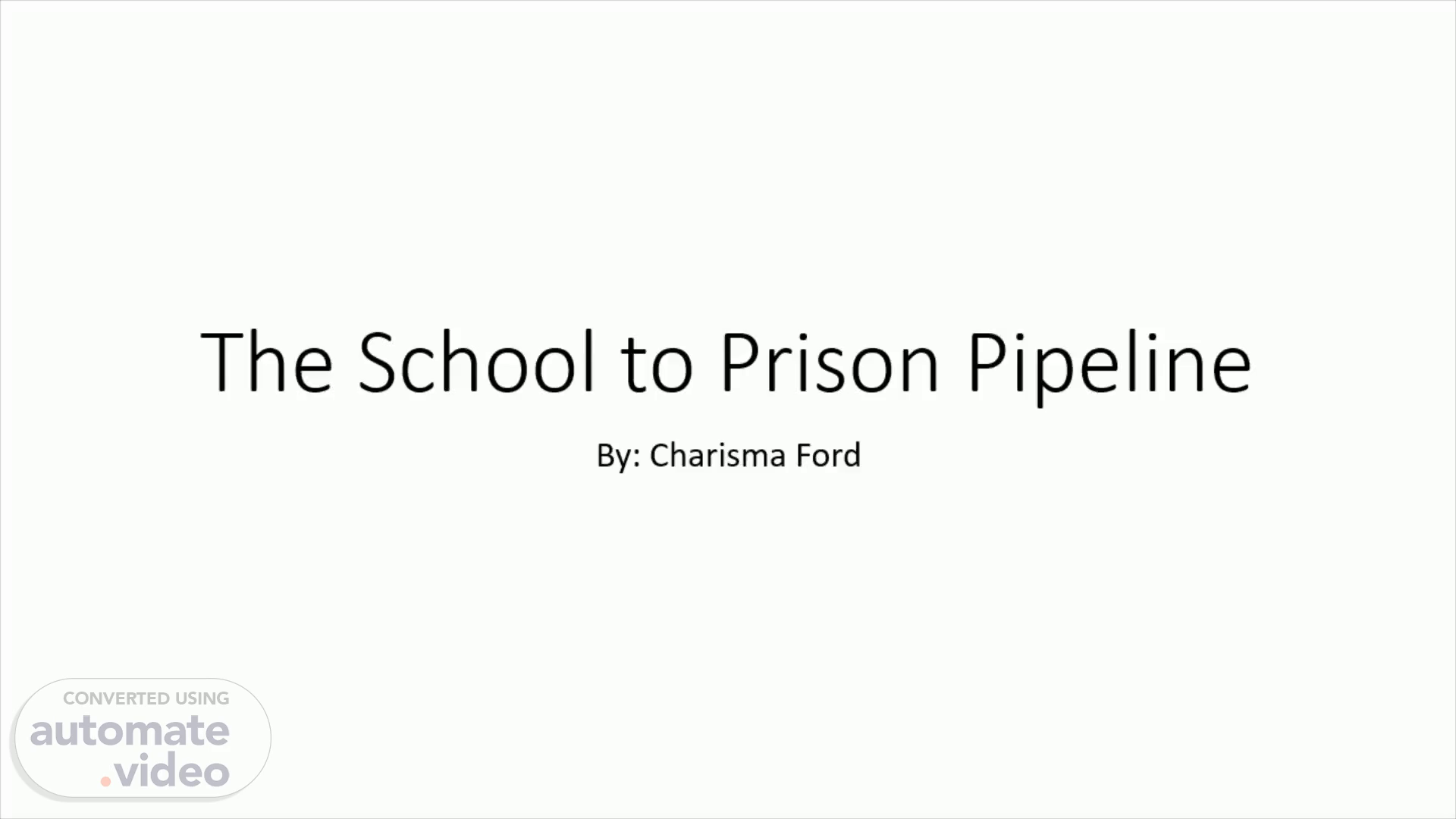
The School to Prison Pipeline
Scene 1 (0s)
The School to Prison Pipeline. By: Charisma Ford.
Scene 2 (7s)
[Audio] The school-to-prison pipeline is a key contributor to the high rates of imprisonment among children in the United States, particularly among students of color, students with disabilities, and LGBTQ students. Because they are seen as a greater threat than other pupils, black guys are disproportionately affected in schools. The school-to-prison pipeline, according to Flannery, is "the process of transferring teenagers out of school and toward the juvenile and criminal justice systems" (" The School-to- Prison-Pipeline: Time to Shut it Down"). Suspension and expulsion, zero tolerance rules, schools that resemble prisons, pathologizing young African Americans, and even a lack of a sense of belonging in schools all contribute to the school-to-prison pipeline. The school-to-prison pipeline mostly impacts kids from low-income or minority communities. They are given fewer resources, have professors who are less competent than others, and are given fewer advanced-level courses. As a result, "they have lower rates of high school completion, poorer levels of academic accomplishment, and a high percentage of college attrition" ( Wald et al. 9). Not surprisingly, this frequently results in the incarceration of many of these youngsters, perpetuating the school-to-prison pipeline..
Scene 3 (1m 32s)
The school-to-prison pipeline, explained.
Scene 4 (4m 48s)
[Audio] Disciplinary regulations that take children out of the classroom do more harm than good for most kids, especially since "the odds of a Black child receiving out-of-school suspension are 1.8 times that of a White child, with Black males being 3.5 times more likely to be suspended. Black children do not act out in class more than White children, and they may suffer suspension even if they do not commit a more significant transgression. This diminishes the value of education for many male Black pupils. Students who have been suspended from school are unable to study. Suspension, on the other hand, might be much more than just a hiccup in the learning process.
Scene 5 (5m 32s)
[Audio] Several schools have introduced a zero-tolerance policy in an effort to eliminate behavioral concerns. The number of police officers stationed at schools has increased. "The number of school resource officers climbed 38 percent between 1997 and 2007," according to Elias. ( 40). Before they have even committed a crime, students of color are stigmatized as criminals. According to Ladson-Billings, "from the minute Black males start school, who and how they can be is already predetermined" ( 12). This is a stereotype threat, and if instructors continue to treat pupils as if they are, they will ultimately live up to the label of "criminal." The criminalization of adolescents essentially sends youngsters down the school-to-prison pipeline headfirst..
Scene 6 (6m 26s)
[Audio] One of the reasons that many children drop out of school is that minorities are underrepresented in the classroom curriculum. They only learn about White individuals who have had a good influence on society, therefore they are disconnected from the stuff that is being taught to them. As a result, children lose interest in school. Because they are unable to relate to the material, they become unhappy with schooling. As a result of a lack of intercultural education, many people lack a sense of belonging. "A 2002 study found that school connectedness, defined as a student's perception of belonging and care at school, is related with lower levels of drug abuse, violence, suicide attempts, pregnancy, and mental distress," write Wald et al ( 12). They feel out of place at school, but if this can be changed, they will be more inclined to stay..
Scene 7 (7m 23s)
[Audio] Students of color frequently feel out of place at school because of this, as well as teachers' low expectations for their academic success. Students lose interest in school as a result, and as a result, they do not study hard and begin to fail classes. As a result, in order to avoid repeating grades or failing again, these students will almost surely drop out. Several organizations and politicians are working to end the school-to-prison pipeline. The process of completely shutting it down begins in the classroom, where teachers must shift away from kicking children out of class when rules are broken and instead create an environment in which students feel comfortable and issues can be addressed. Teachers may dramatically lessen the likelihood of kids being lured into the school-to-prison pipeline by treating all students equally, establishing high goals for all students, and teaching themes that all students can relate to. Schools must do their part by introducing disciplinary measures other than suspensions and expulsions to keep students in school and lessen the parallels between schools and prisons..
Scene 8 (8m 33s)
PUSHOUT: The Criminalization of Black Girls in Schools - Mini Documentary.